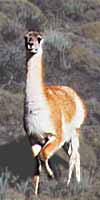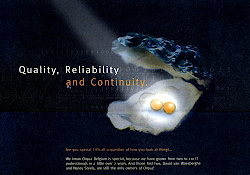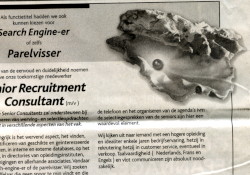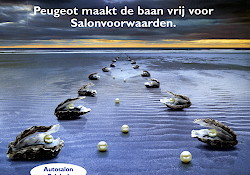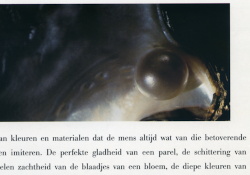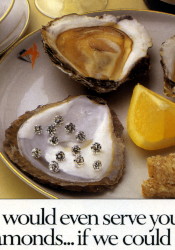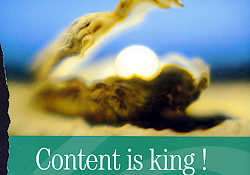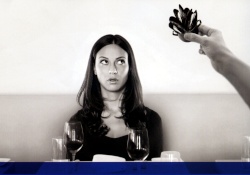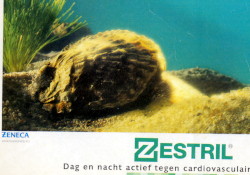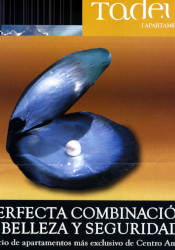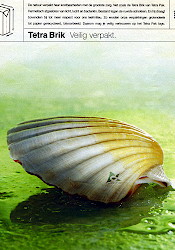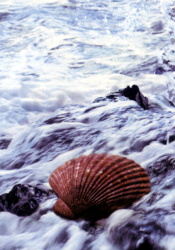Let's start with a company.
We have two advertisements were
a company boasts
Quality, Reliability and Continuity
. The body text is either in English (1) or, much shorter, in Dutch (2).
The latter one (2) starts with The pearl in IT
and then continues with a success story of rare pearls that develop sustainable solutions for satisfied customers
.
The english version (1) is much more elaborate and convoluted with lines like the following:
Are you special? … What makes us so special? Special qualifications, … special customer skills? … Believe us, when it comes to doing that,
we're very special. … But what makes you special? … If you are special, then the world is your oyster.
And if you are truly special, we'd like you to tell us … Don't be shy, don't 'clam' up. We want you
to be very special – like us.
The combination of the spasmodic text with the image of the oyster with pearls suggests that you ≡ special ≈ pearl.
But immediately pops up the question why we are shown two pearls, and why are they amber-coloured?
Therefore the pearl may very well not be you.
One guess is that the amber may relate to the title which is (partly) printed in the same colour.
The pearls in this case would stand for quality, reliability, and continuity.
However both advertisements don't show the same words in amber. And we have three concepts and only two pearls.
A better guess, in my opinion, is that the pearls stand for the founders of the company. The first paragraph of the
text hints in that direction: We know [our company] is special, because we have
grown from two to 110 IT professionals in a little over 2 years. And those first two … are still the only owners …
The two pearls are therefore likely the two founders (*).
This seems to fit with the beam of light (†) pointing to the pearls. They are, rightly, proud of their realisation.
The oyster may be a symbol for the company, but I don't see how, because in this case the pearls (the owners) are making
the oyster (the company) instead of the normal situation where the oyster builds the pearl.
